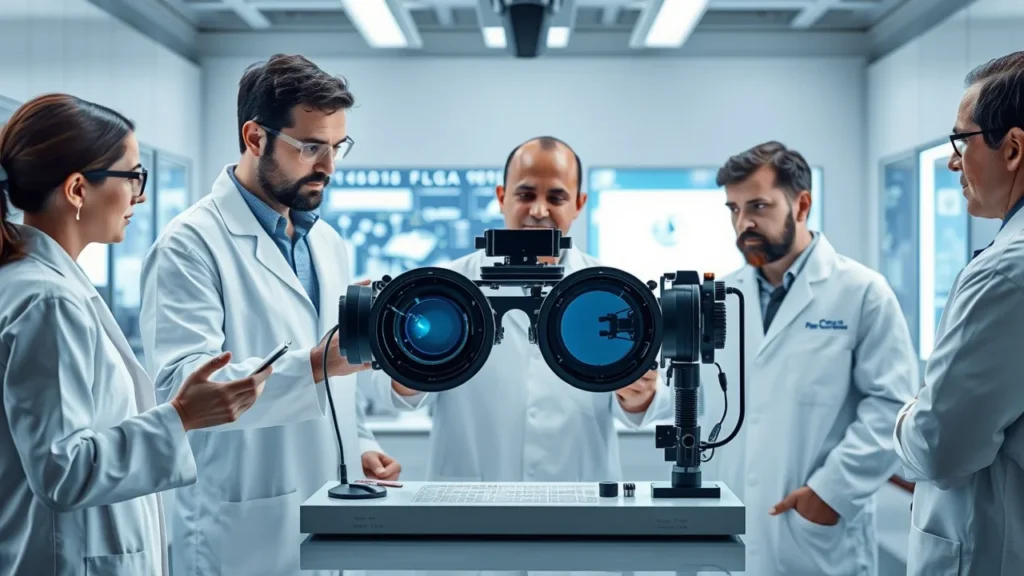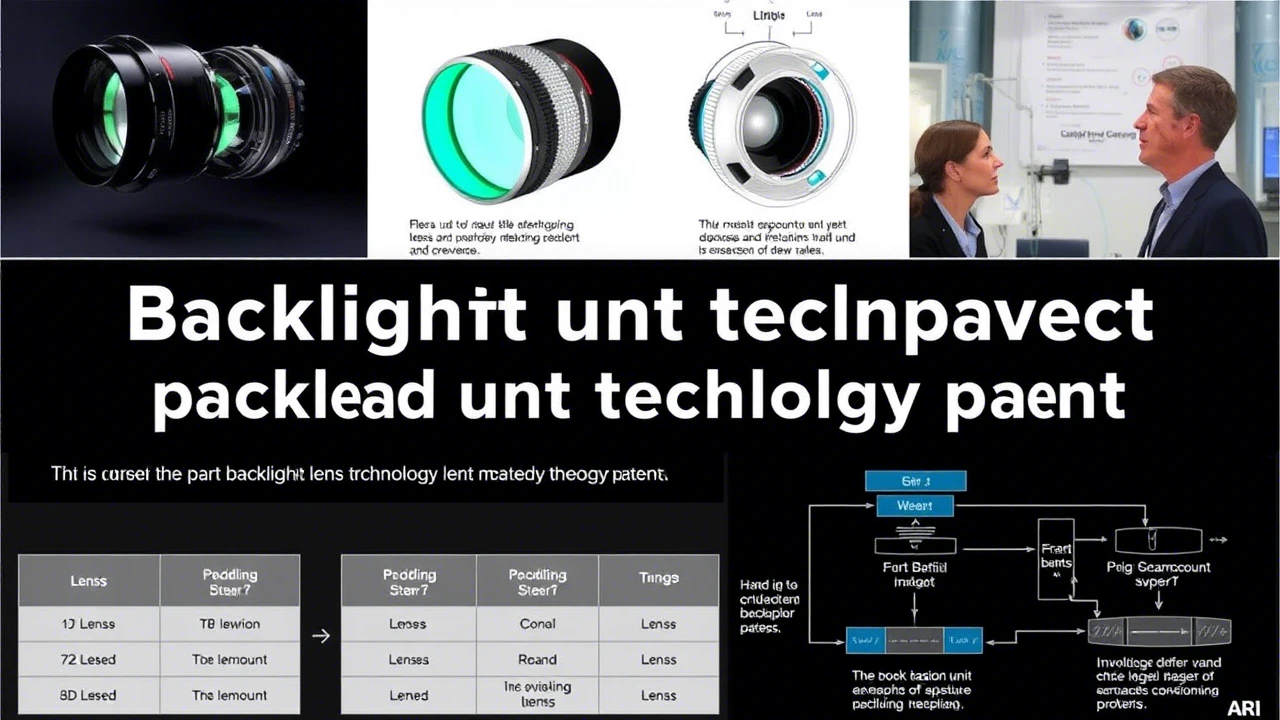One such innovation that has garnered significant attention is back light unit (BLU) lens technology. This advancement plays a pivotal role in enhancing the quality of visual displays, particularly in devices like televisions, smartphones, laptops, and even automotive dashboards.
At the heart of this innovation lies the concept of patents, which protect intellectual property while fostering further research and development. Understanding the intricacies of back light unit lens technology patent is essential for anyone interested in the evolution of display technologies.
What is Back Light Unit Lens Technology?
To begin with, let us delve into what back light unit lens technology entails. A back light unit is a critical component in liquid crystal displays (LCDs), responsible for illuminating the screen from behind. Without proper backlighting, LCDs would fail to produce vibrant colors and sharp images. Over the years, engineers and researchers have worked tirelessly to improve the efficiency, brightness, and uniformity of BLUs. This is where lens technology comes into play.
Lenses within a BLU are designed to focus and distribute light evenly across the display panel. They help minimize energy loss, reduce glare, and enhance color accuracy. By employing advanced materials and precision engineering, manufacturers can create lenses that optimize light distribution while maintaining slim profiles—a necessity for modern devices. The integration of these lenses within BLUs represents a significant leap forward in display technology, enabling sharper images, reduced power consumption, and thinner designs.
The term “back light unit lens technology patent” refers to the legal protection granted to novel inventions related to this technology. Patents ensure that companies investing in research and development can safeguard their innovations, giving them a competitive edge in the market. These patents often cover specific aspects of lens design, manufacturing processes, or unique features that set one product apart from another. For instance, a patent might describe a new type of lens material that improves light diffusion or a method for producing lenses at scale without compromising quality.

Applications Across Industries
The applications of back light unit lens technology extend far beyond consumer electronics. Its versatility makes it indispensable in numerous sectors, each benefiting uniquely from its capabilities. Let’s explore some key areas where this technology shines:
- Consumer Electronics : Smartphones, tablets, and televisions rely heavily on high-quality displays to attract consumers. With advancements in BLU lens technology, these devices now offer brighter screens, deeper blacks, and more accurate color reproduction. This has led to an enhanced user experience, whether watching videos, playing games, or browsing social media.
- Automotive Displays : In the automotive industry, backlit displays are used in dashboards, infotainment systems, and heads-up displays (HUDs). Here, safety and visibility are paramount. BLU lens technology ensures that drivers receive clear information without being distracted by glare or uneven lighting. Additionally, energy-efficient lenses contribute to better fuel economy in electric vehicles.
- Medical Imaging : Precision is crucial in medical imaging equipment such as MRI machines and ultrasound scanners. High-quality backlighting ensures that doctors can interpret images accurately, leading to better diagnoses and patient outcomes. Patented innovations in BLU lens technology have made significant contributions to this field.
- Advertising and Signage : Digital billboards and LED signage benefit greatly from advanced backlighting solutions. Uniform illumination and high brightness levels enable advertisers to capture attention effectively, even in outdoor environments. Furthermore, energy-efficient lenses reduce operational costs over time.
- Virtual Reality (VR) and Augmented Reality (AR) : Immersive experiences in VR and AR depend on high-resolution displays. BLU lens technology helps achieve the necessary clarity and contrast, making virtual worlds feel more realistic. As these technologies continue to evolve, so too will the demand for cutting-edge backlighting solutions.

Back Light Unit Lens Technology
The adoption of back light unit lens technology offers several advantages that make it a preferred choice for manufacturers and end-users alike. Below are some of the most notable benefits:
- Enhanced Visual Quality : Lenses designed for optimal light distribution result in crisper images and more vivid colors. This improvement enhances the overall viewing experience, whether for entertainment or professional purposes.
- Energy Efficiency : Advanced lens designs minimize light wastage, allowing devices to operate using less power. This not only extends battery life in portable electronics but also reduces electricity consumption in larger displays.
- Slimmer Designs : Modern consumers value sleek and lightweight devices. By integrating compact lenses into BLUs, manufacturers can create thinner products without sacrificing performance.
- Durability and Reliability : High-quality materials used in patented lens technologies ensure longevity and resistance to wear and tear. This reliability translates to lower maintenance costs and fewer replacements over time.
- Cost-Effectiveness : While initial investment in patented technologies may be higher, the long-term savings from improved efficiency and durability often outweigh the upfront expenses. Moreover, mass production techniques developed through patents can lower manufacturing costs significantly.
Challenges and Opportunities in Back Light Unit Lens Technology
Despite its many advantages, back light unit lens technology faces certain challenges that must be addressed to unlock its full potential. One of the primary hurdles is the need for continuous innovation. As consumer expectations rise, manufacturers must constantly push boundaries to deliver superior products. This requires substantial investment in research and development, which smaller companies may struggle to afford.
Another challenge lies in navigating the complex world of intellectual property. Securing a back light unit lens technology patent involves rigorous testing, documentation, and legal procedures. Companies must ensure their inventions meet stringent criteria for novelty, non-obviousness, and utility. Failure to do so could result in rejected applications or costly litigation down the line.
However, these challenges also present opportunities for growth and collaboration. Partnerships between academia and industry can accelerate breakthroughs in lens design and manufacturing. Open innovation platforms allow organizations to share knowledge and resources, fostering a culture of collective progress. Additionally, emerging markets offer untapped potential for expansion, particularly in regions experiencing rapid technological adoption.
Key Players and Notable Patents
Several leading companies have made significant strides in developing and patenting back light unit lens technologies. Their innovations serve as benchmarks for the industry and inspire further exploration. Some noteworthy examples include:
| Company Name | Patent Title | Key Feature |
|---|---|---|
| Samsung Electronics | “High-Efficiency Micro-Lens Array for BLUs” | Improved light diffusion and energy savings |
| LG Display | “Ultra-Thin Lens Design for OLED Integration” | Slim profile compatible with flexible displays |
| Sharp Corporation | “Color Enhancement via Advanced Lens Coatings” | Enhanced color accuracy and vibrancy |
| Philips Lighting | “Smart Lens System for Adaptive Brightness” | Dynamic adjustment based on ambient conditions |
These patents highlight the diversity of approaches taken by different players in the market. Each invention addresses specific pain points or introduces novel functionalities, underscoring the importance of tailored solutions in meeting varied customer needs.

Trends and Innovations
Looking ahead, the future of back light unit lens technology appears promising. Several trends are expected to shape its trajectory in the coming years:
- Integration with AI and IoT : Artificial intelligence (AI) and the Internet of Things (IoT) are poised to revolutionize how displays interact with users. Smart lenses capable of adapting to environmental changes or user preferences will become increasingly common.
- Sustainability Initiatives : Environmental concerns are driving the development of eco-friendly materials and energy-efficient designs. Patented innovations in sustainable lens technologies will likely gain traction among environmentally conscious consumers.
- Quantum Dot Enhancements : Quantum dots represent the next frontier in display technology. When combined with advanced BLU lenses, they promise unparalleled color purity and brightness levels. Ongoing research in this area holds immense potential for transformative breakthroughs.
- Flexible and Foldable Displays : The rise of foldable smartphones and rollable TVs demands innovative lens solutions that can accommodate unconventional form factors. Patents focusing on flexibility and resilience will play a crucial role in this space.
- Holographic Displays : Although still in experimental stages, holographic displays could redefine visual communication entirely. Backlighting powered by sophisticated lens arrays will be instrumental in bringing these futuristic concepts to life.
Conclusion
Back light unit lens technology patent stands as a testament to human ingenuity and the relentless pursuit of excellence. From enhancing visual quality to enabling groundbreaking applications, this technology continues to drive innovation across multiple industries. As we move forward, addressing existing challenges and embracing emerging trends will be vital to sustaining momentum.
